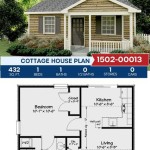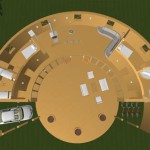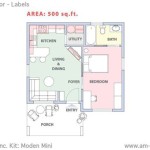Essential Aspects of Scale Drawing of a House Plan
A scale drawing of a house plan is a crucial aspect of the design and construction process. It provides a precise and proportional representation of the proposed building, allowing architects, engineers, and contractors to visualize and execute the project efficiently. Here are some essential elements of a scale drawing of a house plan:
1. Scale:
The scale of a drawing determines the relationship between the actual size of the building and its representation on paper. It is expressed as a ratio, such as 1:100, which means that one unit on the drawing represents 100 units in real life. Choosing the appropriate scale is essential for maintaining accuracy and readability.
2. Dimensions:
Accurate dimensions are vital for the construction of the building. These include the overall dimensions of the house, as well as the specific measurements of each room, doorway, window, and other structural elements. Careful attention to dimensions ensures that the final building meets the intended design.
3. Layout:
The layout of the house plan shows the arrangement of rooms, spaces, and other features within the building. It includes the location of walls, windows, doors, stairs, and any other architectural elements. A well-organized layout optimizes space and functionality.
4. Floor Plan:
A floor plan is a two-dimensional representation of a single level of the building. It shows the layout, dimensions, and other details of that particular floor, providing a clear understanding of the space distribution.
5. Elevations:
Elevations are vertical drawings that show the exterior walls of the building from different sides. They provide information about the height, shape, and design of the building, including architectural features such as windows, doors, and balconies.
6. Sections:
Sections are vertical drawings that cut through the building to show the interior construction. They reveal the relationship between different levels and spaces, as well as details of walls, floors, ceilings, and other structural components.
7. Legends and Notes:
Legends and notes provide additional information and clarification on the drawing. They may include symbols, abbreviations, or written notes that explain specific details or materials used in the construction.
8. Accuracy and Precision:
Accuracy and precision are crucial in scale drawings. Measurements and dimensions must be precise to ensure proper construction. The drawing should be carefully drafted and checked for errors to prevent costly mistakes during the construction phase.
9. Software and Tools:
Various software programs and tools can assist in creating scale drawings of house plans. These tools provide a range of features, such as automated dimensioning, library of symbols, and advanced editing capabilities. They can significantly improve efficiency and accuracy.
In conclusion, scale drawings of house plans are essential for effective design and construction. By incorporating these essential elements, architects, engineers, and contractors can create accurate and informative representations of the intended building, ensuring a successful and efficient execution of the project.

Convert Scale Measurements Into Real Life House Plan With Grid

Scale Drawing Of The Home Under Study Showing Sensor Control Scientific Diagram

Scale Drawings

How To Manually Draft A Basic Floor Plan 11 Steps Instructables

Calculating Actual Size Given The Scale In A Drawing Practice Algebra Problems Study Com

Floor Plan For A Small House 1 150 Sf With 3 Bedrooms And 2 Black White Architectural Of Lay Drawing Plans Free

How To Measure And Draw A Floor Plan Scale

Scale Drawings

The Katrina Cottage Model 1185 Floor Plans House Plan Gallery

Architect Use Scale Drawings Of Diffe Buildings To Find The Actual Set Up That Building They Perspectives Sketch These Floor Plan A House Is Be








